Open Muscle – The Open-Source Forearm Muscle-Based Finger Tracking Device
It uses custom built pressure sensors made from hall effect sensors, springs, and magnets. The current version has 12 sensors placed radially around the forearm and can detect different finger movements.
To train open muscle we used our LASK System that applies the labels for the feature data that the open muscle band records. Both are open source and open hardware.
Preliminary Machine Learning Testing
It was exciting to get our first machine learning results and they were better than expected! Live model predictions were done and showed the ability for the model to learn some of the finger presses. The results varied given the tightness of the band, the rotation of the sensor band, keeping the open muscle band at the same location on the forearm for both training capture and live prediction sessions.
Cyan is the actual signal from the LASK
Yellow is the predicted output from the ML Model
Bottom 12 are the open muscle sensors
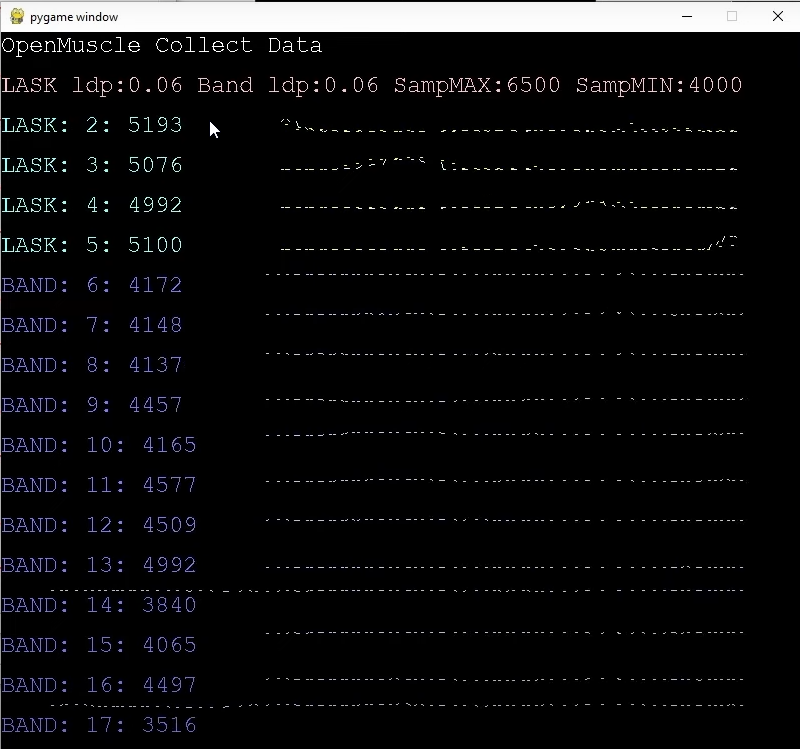
The is much work to do but each mini success adds to the greater goal of a prosthetic sensor hardware, software, and machine learning suite.
All data to train the model and code available on Github: https://github.com/turfptax/openmuscle
Our first model training: Note that these included the time domain for each data-point.
Preliminary ML Test Results:
predictions_vs_actuals2-Ordered-1Download
predictions_vs_actuals2-1Download
predictions_vs_actuals2-ArangeDownload
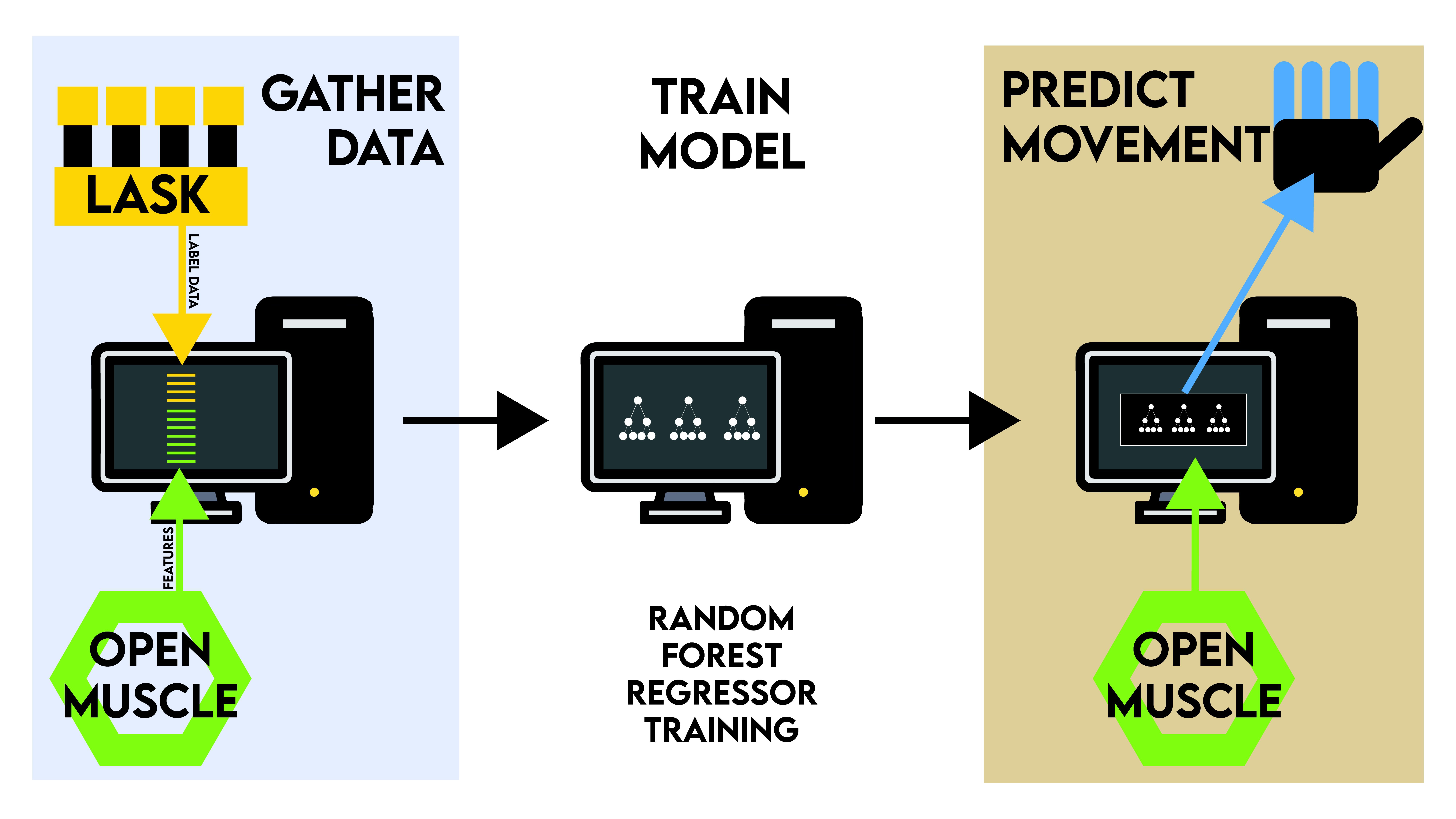
We have just received our first results from the training model and have a lot more work to do. If you would like to be a part of the team please reach out right away! Mostly it has just been me working on this for the last 9 months. -Turfp
 TURFPTAx
TURFPTAx





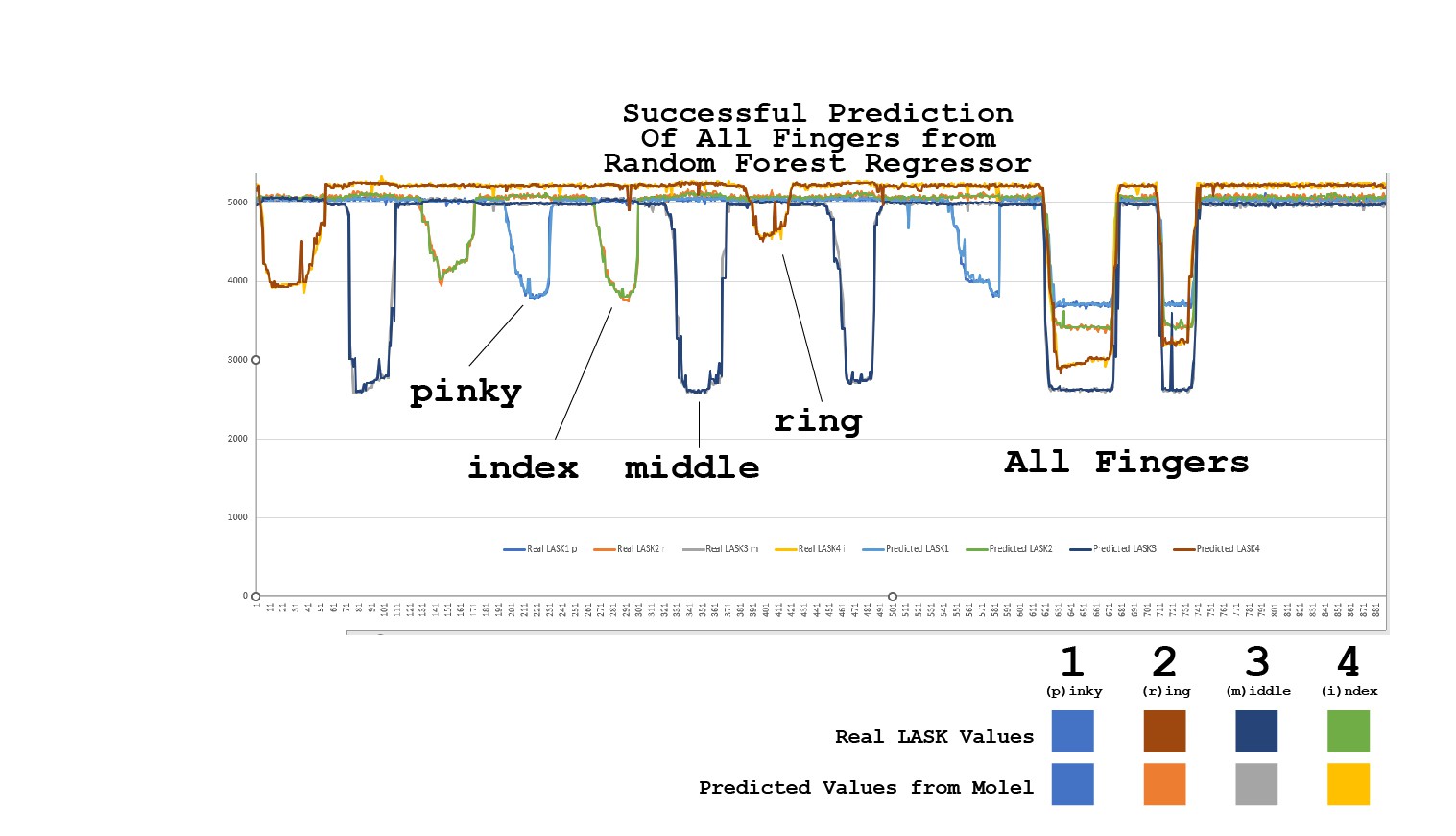


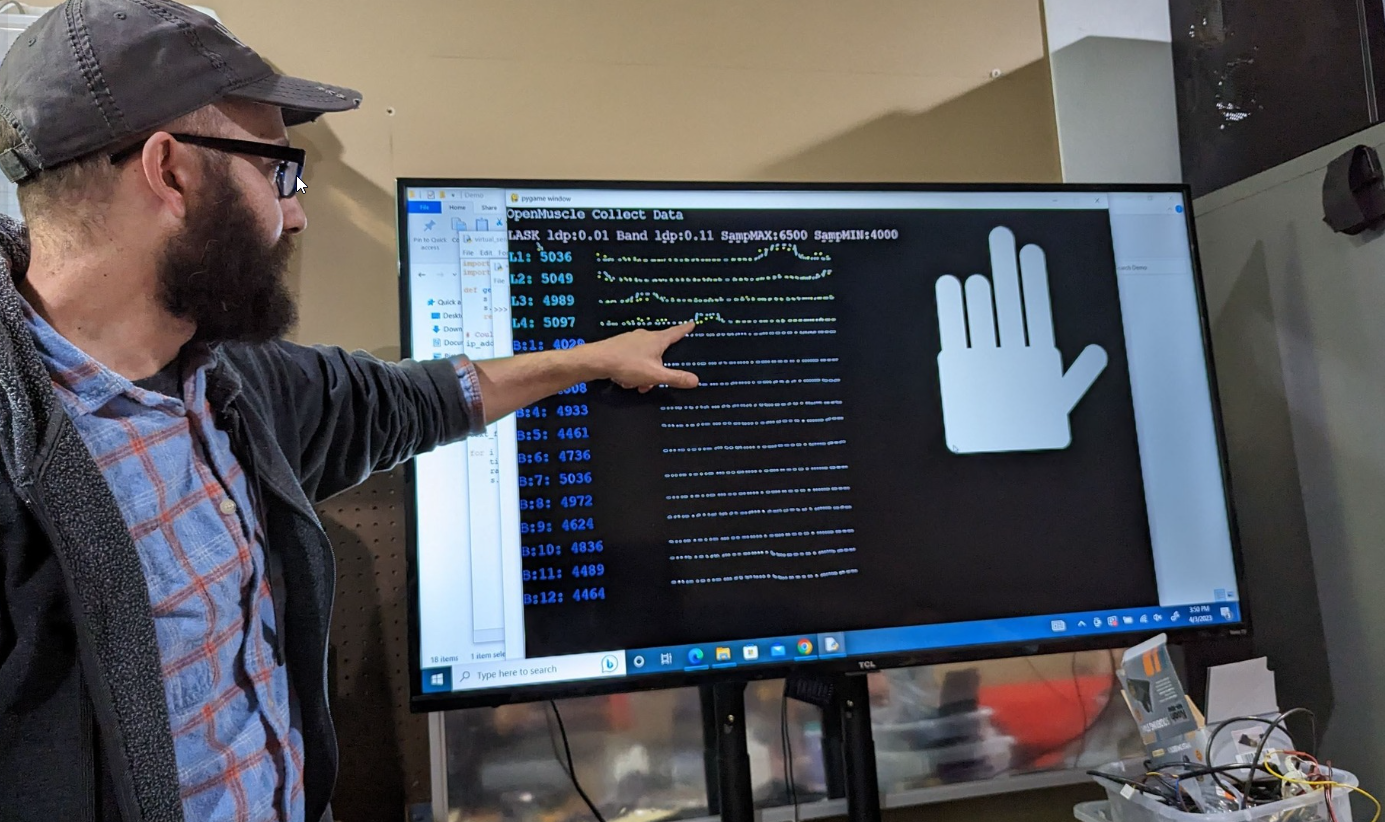
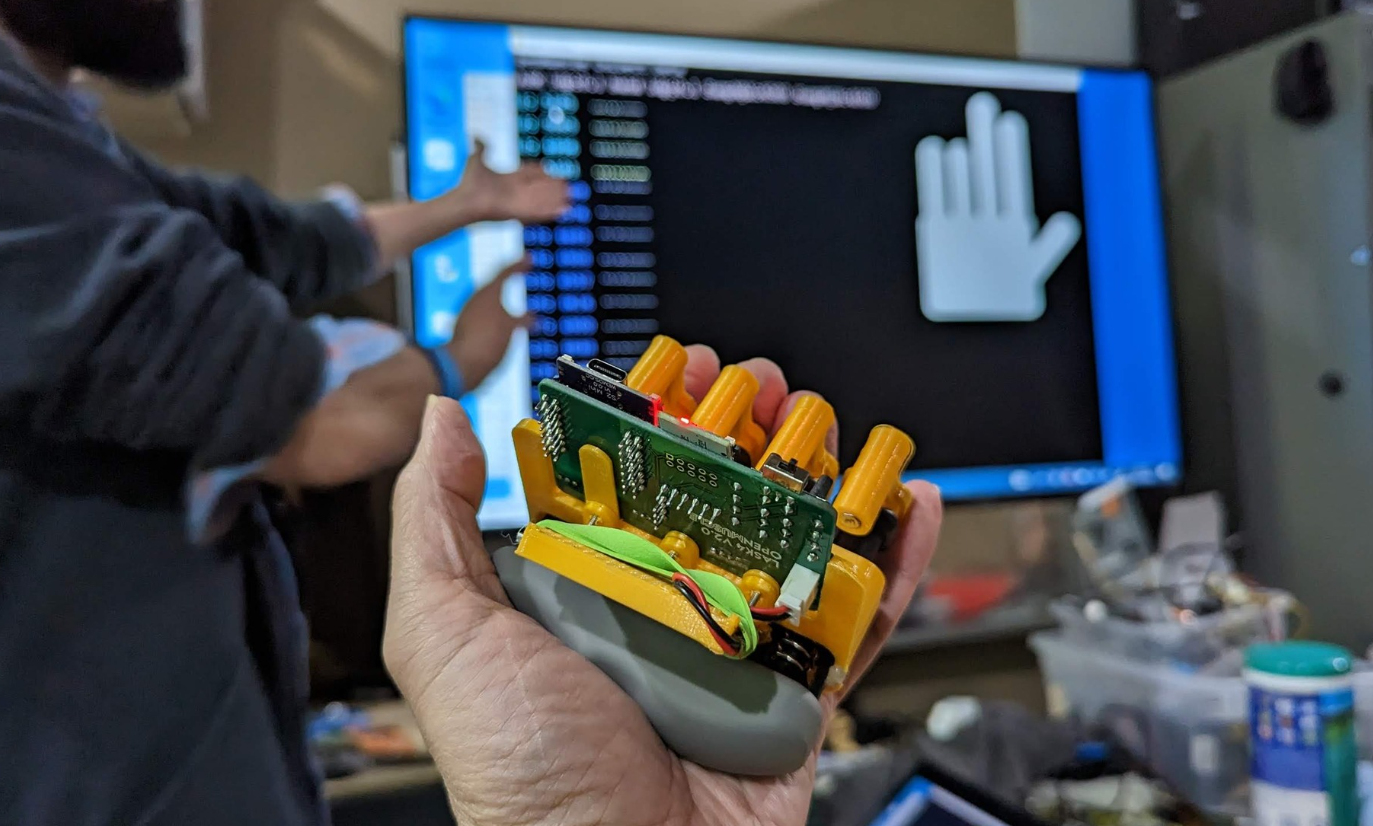
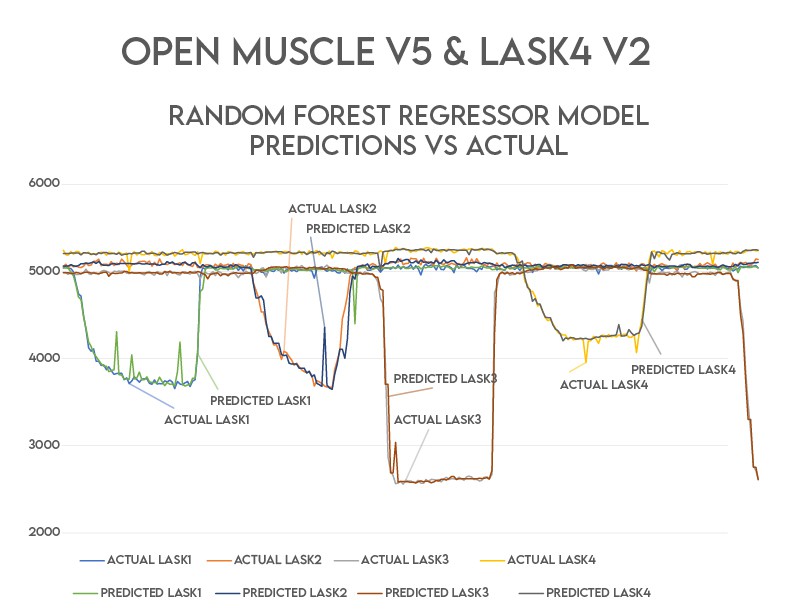


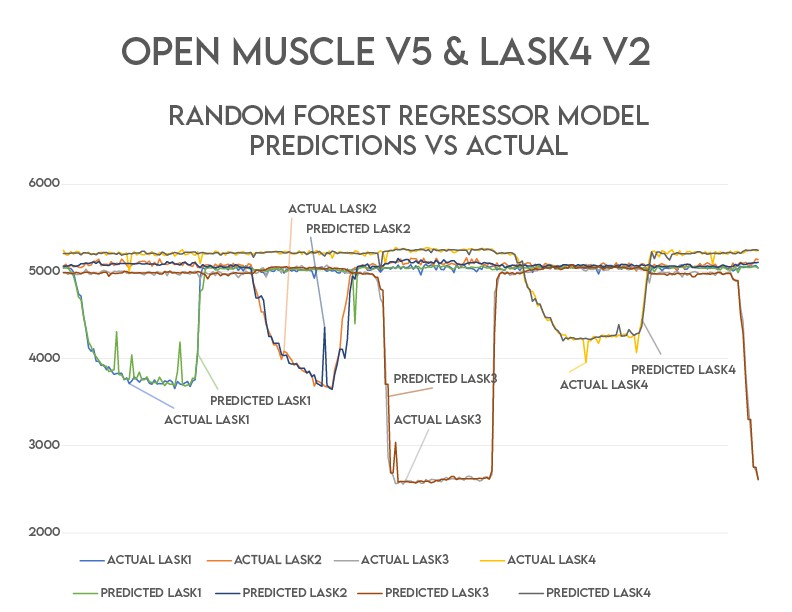





 Manoj kumar
Manoj kumar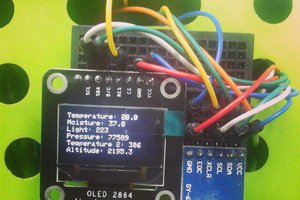
 Psyrax
Psyrax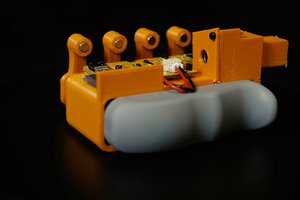
We can accurately predict fingers with 20 min of training data. This is very exciting!!!